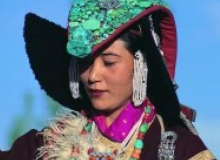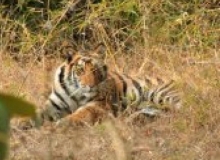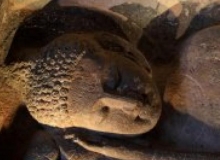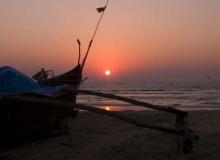
Speak to a specialist
0208 777 4873
0208 777 4873
Places to see: India

LADAKH
Ladakh rests between the two highest mountain ranges the Himalayas and the Karakoram, a part of Jammu and Kashmir. It consists of Leh and Kargil. In spite of its extreme cold climate Ladakh has always fascinated people form all over the world. Winters which are bitterly cold in Ladakh can fall as low as – 45 degrees c, but the beauty and magic of Ladakh lays in the fact that even today it is untouched by the crowded city life and remains one of the most unexplored areas of the world.
The barren beauty of Ladakh with snow capped peaks and clean azure sky have attracted the intrepid traveler since the region was opened to tourists in the 1970s. Since then, Ladakh has become a favorite haunt for trekking and mountaineering enthusiasts. The rugged terrain and the majestic mountains around, make an exotic cocktail for an adventure sport lover. But before you decide to fly away to the land of Buddhist monasteries and brave people, it is imperative to understand that you need at least a week to enjoy your tour to Ladakh. Since, acclimatization it self needs at least a few days in Ladakh.
Ladakh is home to a large number of Buddhists, who have preserved their rich culture and tradition from the days of yore. A tour to Ladakh is not just about beautiful views of snow-capped peaks kissing the blue sky or colorful flags flattering in the wind but is also about centuries old culture of Ladakhi people and their indomitable spirit to live cheerfully in one of the most hostile terrains in the world. Ladakh the ‘ethereal cold desert’ has been given many names like The Last Shangri-La, Moonscape and Little Tibet
Leh is the capital of Ladakh and undoubtedly the heart of Ladakh too! Surrounded by mountains on all sides and situated on the banks of River Indus, Leh spells sheer elegance of nature in its raw form. Frequented by trekkers Leh is famous for traditionally clad women carrying baskets on their backs- selling all kinds of articles.
Religion and Culture: Buddhism is the way of life in Ladakh, though there are people of other faiths in Ladakh who live in harmony with each other. The Buddhist monasteries dot the Ladakh landscape and are the center of attraction during the various fairs and festivals.
One can find 'tangkhas', masks, musical instruments and precious items in the Gompas in Ladakh. A huge painting of the Buddha inside the Hemis Monastery is the biggest draw. Thiksey and Shey monasteries are the classic architectural wonder in the region. No matter which part of Ladakh you travel, the smiling Buddha and His followers greet you in smile.
Simplicity is the way of life in Ladakh, as the modernity has not touched the town as it has happened in other cities and towns of India. Cut-off from rest of the world, Ladakh is barren yet beautiful. Ladakh comes alive during the fairs and festivals as one can see Ladakhi people in their traditional dress. Perak, the headgear worn by traditional Ladakhi women is the striking feature of womenfolk of Ladakh. The other feature that strikes are the precious stones that adorn a woman's neck in Ladakh.
Monasteries: In Ladakh, monasteries either belong to Mahayana or Hinayana sect of Buddhism. Hemis is one of the largest and most popular monasteries in Ladakh. The monastery is quiet popular among tourists and most travelers to Ladakh visit the monastery. The Hemis is center of action during the annual Hemis festival that takes place in June-July. The festival is held to commemorate the birth anniversary of Guru Padmasambhava. This is the best time to see the cultural side of Ladakh. During the festival, locals from remote corners of Ladakh converge on the Hemis monastery.
Reaching Ladakh: Leh is the nearest airport, which is connected to Delhi, Chandigarh and Srinagar. The nearest railway station to Ladakh is Jammu. From Jammu you can head to Srinagar by road and then to Ladakh, which is some 434 kilometers away. It is about two-day journey from Srinagar with night halt at Kargil. You can also approach Leh Ladakh from Manali. Discover a new way of life and culture in the Himalayas with Global Explorers.
Trekking and Mountaineering in Ladakh: Leh Ladakh is one of few wonderful destinations ideal for trekking and mountaineering. Ladakh with its rough terrain and wonderful scenic locales offer an adventure lover a mix of both scenic beauty and challenging heights. The Susu and Zanskar valley has a number of stunning peaks that challenge an intrepid traveler to scale new heights in Ladakh. Some of the ideal places for mountaineering include Nun-Kun massif and Zanskar massif. The best time to visit Leh Ladakh is during the months of June and October.
Ladakh is a trekking haven for trekkers. There are a number of trekking trails in Leh Ladakh that passes through many beautiful locations. Spituk to Markha Valley, Laayury gompa to Chilling and Likir to Temisgam are some of the popular treks that one can take. Acclimatization is the most important activity before heading for trekking and mountaineering. Rafting down the Zanskar is another exciting thought but it is imperative to take help of a rafting instructor or guide.
Ever thought of trekking on a frozen river? A part of the Zanskar River freezes during the winter and is used as trekking route by many seasoned trekking enthusiasts. The trek is one of its kinds in Leh Ladakh. If you are a novice when it comes to climbing mountains and negotiating treacherous treks, it is better to hire a seasoned mountaineer or trekker. A guide with experience and with fairly good knowledge of the area is of great help.
The barren beauty of Ladakh with snow capped peaks and clean azure sky have attracted the intrepid traveler since the region was opened to tourists in the 1970s. Since then, Ladakh has become a favorite haunt for trekking and mountaineering enthusiasts. The rugged terrain and the majestic mountains around, make an exotic cocktail for an adventure sport lover. But before you decide to fly away to the land of Buddhist monasteries and brave people, it is imperative to understand that you need at least a week to enjoy your tour to Ladakh. Since, acclimatization it self needs at least a few days in Ladakh.
Ladakh is home to a large number of Buddhists, who have preserved their rich culture and tradition from the days of yore. A tour to Ladakh is not just about beautiful views of snow-capped peaks kissing the blue sky or colorful flags flattering in the wind but is also about centuries old culture of Ladakhi people and their indomitable spirit to live cheerfully in one of the most hostile terrains in the world. Ladakh the ‘ethereal cold desert’ has been given many names like The Last Shangri-La, Moonscape and Little Tibet
Leh is the capital of Ladakh and undoubtedly the heart of Ladakh too! Surrounded by mountains on all sides and situated on the banks of River Indus, Leh spells sheer elegance of nature in its raw form. Frequented by trekkers Leh is famous for traditionally clad women carrying baskets on their backs- selling all kinds of articles.
Religion and Culture: Buddhism is the way of life in Ladakh, though there are people of other faiths in Ladakh who live in harmony with each other. The Buddhist monasteries dot the Ladakh landscape and are the center of attraction during the various fairs and festivals.
One can find 'tangkhas', masks, musical instruments and precious items in the Gompas in Ladakh. A huge painting of the Buddha inside the Hemis Monastery is the biggest draw. Thiksey and Shey monasteries are the classic architectural wonder in the region. No matter which part of Ladakh you travel, the smiling Buddha and His followers greet you in smile.
Simplicity is the way of life in Ladakh, as the modernity has not touched the town as it has happened in other cities and towns of India. Cut-off from rest of the world, Ladakh is barren yet beautiful. Ladakh comes alive during the fairs and festivals as one can see Ladakhi people in their traditional dress. Perak, the headgear worn by traditional Ladakhi women is the striking feature of womenfolk of Ladakh. The other feature that strikes are the precious stones that adorn a woman's neck in Ladakh.
Monasteries: In Ladakh, monasteries either belong to Mahayana or Hinayana sect of Buddhism. Hemis is one of the largest and most popular monasteries in Ladakh. The monastery is quiet popular among tourists and most travelers to Ladakh visit the monastery. The Hemis is center of action during the annual Hemis festival that takes place in June-July. The festival is held to commemorate the birth anniversary of Guru Padmasambhava. This is the best time to see the cultural side of Ladakh. During the festival, locals from remote corners of Ladakh converge on the Hemis monastery.
Reaching Ladakh: Leh is the nearest airport, which is connected to Delhi, Chandigarh and Srinagar. The nearest railway station to Ladakh is Jammu. From Jammu you can head to Srinagar by road and then to Ladakh, which is some 434 kilometers away. It is about two-day journey from Srinagar with night halt at Kargil. You can also approach Leh Ladakh from Manali. Discover a new way of life and culture in the Himalayas with Global Explorers.
Trekking and Mountaineering in Ladakh: Leh Ladakh is one of few wonderful destinations ideal for trekking and mountaineering. Ladakh with its rough terrain and wonderful scenic locales offer an adventure lover a mix of both scenic beauty and challenging heights. The Susu and Zanskar valley has a number of stunning peaks that challenge an intrepid traveler to scale new heights in Ladakh. Some of the ideal places for mountaineering include Nun-Kun massif and Zanskar massif. The best time to visit Leh Ladakh is during the months of June and October.
Ladakh is a trekking haven for trekkers. There are a number of trekking trails in Leh Ladakh that passes through many beautiful locations. Spituk to Markha Valley, Laayury gompa to Chilling and Likir to Temisgam are some of the popular treks that one can take. Acclimatization is the most important activity before heading for trekking and mountaineering. Rafting down the Zanskar is another exciting thought but it is imperative to take help of a rafting instructor or guide.
Ever thought of trekking on a frozen river? A part of the Zanskar River freezes during the winter and is used as trekking route by many seasoned trekking enthusiasts. The trek is one of its kinds in Leh Ladakh. If you are a novice when it comes to climbing mountains and negotiating treacherous treks, it is better to hire a seasoned mountaineer or trekker. A guide with experience and with fairly good knowledge of the area is of great help.

MADHYA PRADESH
Madhya Pradesh:
BhopalUjjain
Gwalior
Bhojpur
Khajuraho
Bhimbetak
Mandu
Sanchi
Orccha
ChattisgarhTribes
BhandavgarhTiger Reserve
Kanha Tiger Reserve

MAHARASHTRA
Mumbai
Ajanta Caves
Ellora Caves
Elephanta Caves

GOA
Variously known as "Pearl of the Orient" and a "Tourist Paradise", the state of Goa is located on the western coast of India in the coastal belt known as Konkan.
The magnificent scenic beauty and the architectural splendours of its temples, churches and old houses have made Goa a firm favourite with travellers around the world. But then, Goa is much more than just beaches and sea. It has a soul which goes deep into unique history, rich culture and some of the prettiest natural scenery that India has to offer.
The state of Maharashtra borders Goa on the north, the state of Karnataka on the south and east. The vast expanse of the Arabian Sea on the west forms the magnificent coastline for which Goa is justly famous.
Along with English which is widely spoken all over Goa, Konkani and Marathi are the state languages. The national language Hindi is also well understood in most areas around the state.
Goan cuisine is a blend of different influences the Goans had to endure during the centuries. The staple food in Goa is fish and rice, both among the Hindus and the Catholics. Unlike the Christian food the Hindu Goan food is not strongly influenced by the Portuguese cuisine.
The tourist season in Goa begins in late September and carries on through early March. The weather in these months is usually dry and pleasantly cool. Then the weather gets fairly hot around May and by end of June, Goa receives the full blast of the Indian monsoon with sudden downpours and tropical thunderstorms. However it is also during the monsoon that Goa is probably at its most beautiful, with greenery sprouting all around.
Besides the natural beauty, the fabulous beaches and sunshine, travellers to Goa love the laid-back, peaceful, warm and friendly nature of the Goan people. After all, more than anywhere else on planet earth, this is a place where people really know how to relax.
Subscribe here to our monthly newsletters


